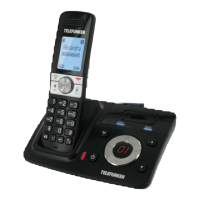Lexmark MS31x/41x/510/610 & MX310/410/51x/61x Product Study Guide Rev 1.3
Theory of Operation
Electrophotographic Process
This monochrome laser printer uses the Electrophotographic Process (EP Process) to deliver high quality
print at high speed.
The EP Process steps are as follows:
Charge
The charge roll deposits a uniform negative electrostatic charge on the light-sensitive
surface of the photoconductor drum.
Expose
Laser light enters the cartridge and strikes the photoconductor (PC) drum in areas to
be developed, forming an invisible (latent) electrostatic image of the desired print.
Develop
Once the laser exposes the photoconductor, the HVPS sends charge to the developer
roll. Because of the charge difference between the toner on the developer roller and
the electrostatic image created by the laser, the toner is attracted to areas of the
photoconductor surface exposed by the laser.
Transfer
As the media travels between the transfer roll and the photoconductor, the transfer
roll applies a positive charge to the back of the media. This positive charge attracts the
negatively charged toner image from the photoconductor to the top surface of the
media.
Fuse
The media – now with a “toned” image – moves through the fuser assembly. Using
heat and pressure, toner is bonded permanently to the media.
Clean
The cleaning blade removes any toner that remains on the photoconductor after the
transfer process. The toner removed is collected in the Imaging Unit’s waster toner
bottle.
If a component fails, it is important to recognize at which step the failure took place. By knowing this, you
can determine the source of the problem. Understanding the EP Process is the key to troubleshooting
print quality problems.
For Training Purposes Only 7 4/21/2014

